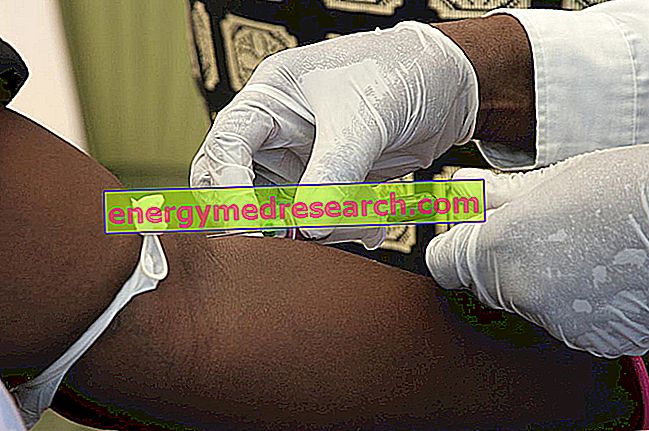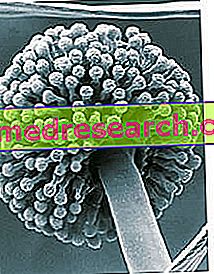The diagnosis of African trypanosomiasis must be considered in all persons who have stayed in areas of Africa considered to be at risk for the disease. The first stage of sleeping sickness is difficult to diagnose, as it causes non-specific symptoms, such as fever and weakness. Methods used for the direct identification of trypanosomes include the analysis by light microscopy of blood samples (smear or thick drop) or lymph node aspiration
Category infectious diseases
Noroviruses are single-stranded RNA viruses, belonging to the Caliciviridae family and responsible for the infectious pathogenesis of FOOD of gastroenteritis. Background The Noroviruses were discovered in 1972 and acquired the "unofficial" nickname of "Norwalk" or Norwalk-like virus ", due to a large epidemic developed in 1968 in an American hospital in the city of Norwalk, in the state of Ohio
Scrofula or scrofula is an infection of the lymph nodes of the neck better called tuberculous adenitis . It is an infectious disease generated by mycobacteria; in the adult it is often caused by Mycobacterium tubercolosis or scrofulaceum (also responsible for the much more known and lethal pulmonary tuberculosis ) which, in this case, penetrates the lymphatic circulation and affects some lymph nodes, above all those below the jaw; in contrast, scrofula or scrofula in children is caused by other "NON-tubercular or atypical" mycobacteria such as the Nontuberculous mycobacteria
Adenovirus: introduction In the microbiological field, the " Adenoviruses " represent a family of viruses comprising a hundred different serotypes: of these 100 species, 57 have been identified as possible carriers of infection in humans, responsible, in turn, for 5-10% of all infectious processes affecting the upper respiratory tract of children and adults (such as, above all, tonsillitis, colds, pneumonia and pharyngitis)
Definition and generalities Antiseptics are particular substances belonging to the great category of anti-infective agents , which also include disinfectants and antimicrobial drugs for systemic use. Antiseptics, generally, are substances used for the disinfection of the skin (intact and not) and of the mucous membranes of the individual, as well as of animals (antiseptics for veterinary use)
Anthrax: definition In the medical field, the term anthrax refers to a serious acute infection, fortunately rare, sustained by the bacillus anthracis , involving the skin, the gastrointestinal tract and the lungs: the anthrax danger is very high, since many of its variants are lethal . Anthrax develops mainly in herbivorous mammals, both wild and domestic (eg sheep, goats, cattle, pigs, etc
Literally, the term "aseptic" is synonymous with " substance or material without harmful / pathogenic microorganisms ": by analyzing the word etymologically, the term "aseptic" is composed of the root a- (privative grammatical function) and the ending -sectic - from Greek septikos or from the Latin septicum - indicating a putrefactive condition that favors sepsis
Aspergillosis: definition The term "aspergillosis" defines a group of diseases caused by molds belonging to the genus Aspergillus. Aspergillosis are diseases affecting the respiratory system, partially infectious and partly allergic. Let us remember briefly that Aspergillus are commensal mycetes normally present in the body, especially on skin, oral cavity and digestive system: only in certain conditions, these microorganisms can become pathogenic and cause damage, mostly to the respiratory tract
Aspergillus: introduction Together with Fusarium sp . and Penicillium sp., the genus Aspergillus is the chapter of toxigenic molds: we are talking about miceti microorganisms able to synthesize a fair amount of toxins, whose toxic power is subordinated to the genotype of the producer strain. In common parlance, the term Aspergillo refers to the genus of belonging of this ubiquitous mold; the "aspergillosis", on the other hand, identify the infections transmitted by this pathogen
What is that Koch's bacillus - whose scientific name is Mycobacterium tubercolosis - is the microorganism responsible for tuberculosis, a highly contagious infectious disease that - if not properly treated - can prove lethal. Koch's bacillus owes its name to the German doctor and microbiologist Robert Koch who discovered it in 1882, identifying it, precisely, as the etiological agent of tuberculosis
Generality Clostridium is the name of a genus of Gram-positive bacteria with particular characteristics, including the obligatory anaerobiosis, the existence in nature both in the vegetative state and in the form of spores, the great diffusion in the environment and the rod-shaped form. The genus Clostridium includes famous pathogenic bacteria, such as Clostridium tetani , Clostridium botulinum , Clostridium difficile and Clostridium perfringens











